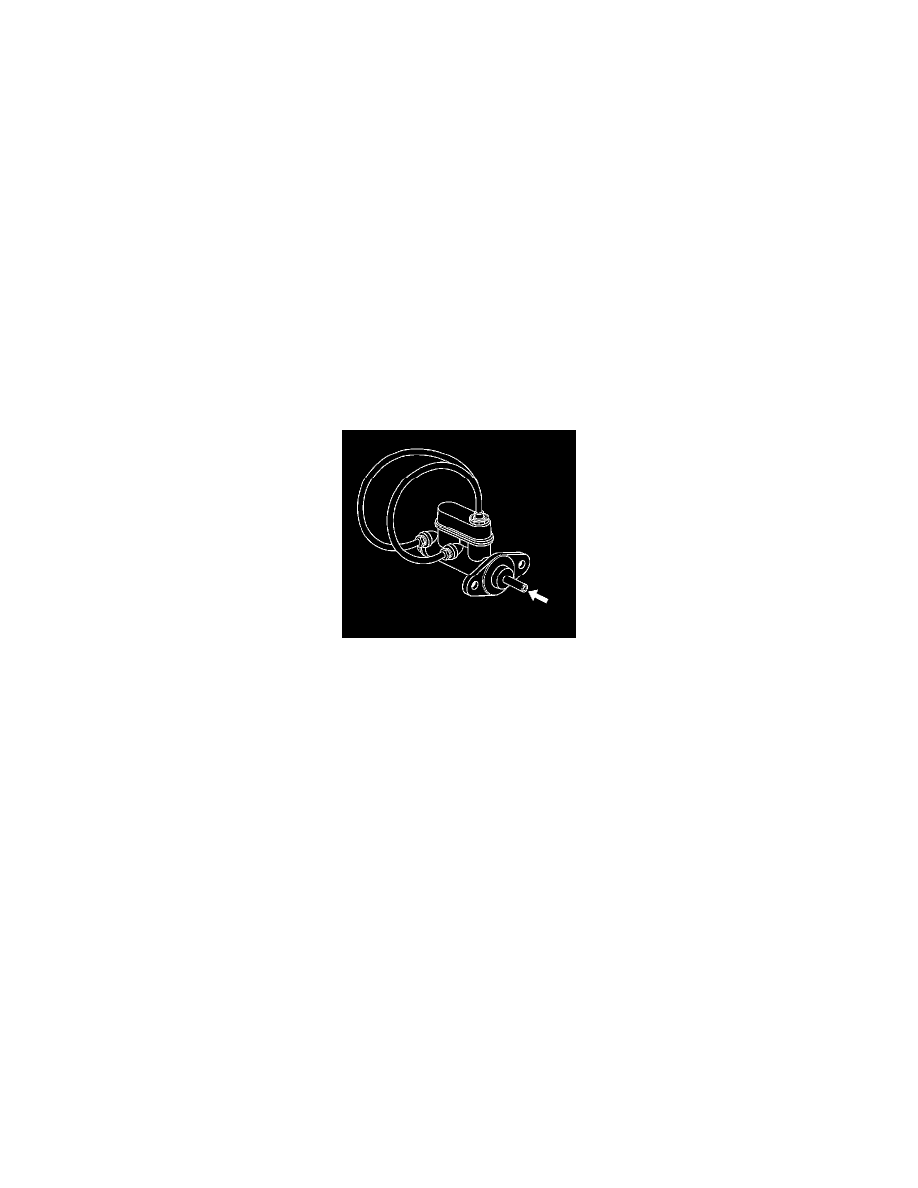Silverado 1500 2WD V8-6.0L Hybrid (2009)

6. If the brake fluid level is at the upper fill level mark, do not add brake fluid to the master cylinder reservoir.
7. Start the engine.
8. As the brake modulator draws brake fluid from the master cylinder reservoir to charge the brake modulator and the HPA, the brake fluid level will
decrease.
9. The brake fluid level should be at or above the midway point of the MAX and MIN level marks (2) of the master cylinder reservoir after the brake
fluid level stabilizes.
10. If the brake fluid level is at or below the midway point of the MAX and MIN level marks on the master cylinder reservoir after the brake fluid
level stabilizes, the brake system should be inspected for wear and possible brake fluid leaks.
11. If the brake fluid level is at or below the midway point of the MAX and MIN level marks on the master cylinder reservoir point during routine
fluid checks, and an inspection of the brake system did not reveal wear or brake fluid leaks, the brake fluid may be filled to the MAX level mark.
12. If brake system service was just completed, brake fluid should be added to bring the level in the master cylinder reservoir the MAX level mark.
13. If the brake fluid level is at the MAX level mark, adding brake fluid is not recommended under normal conditions.
14. If brake fluid is to be added to the master cylinder reservoir, clean the outside of the reservoir on and around the reservoir cap prior to removing
the cap and diaphragm. Use only Delco Supreme 11(R), GM P/N 12377967 (Canadian P/N 992667), or equivalent DOT-3 brake fluid from a
clean, sealed brake fluid container.
Hydraulic Brake System Bleeding (Manual with RPO BRM)
Master Cylinder Bench Bleeding (Non-Hybrid)
Warning: Refer to Brake Fluid Irritant Warning (See: Service Precautions/Technician Safety Information/Brake Fluid Irritant Warning) .
Caution: Refer to Brake Fluid Effects on Paint and Electrical Components Caution (See: Service Precautions/Vehicle Damage Warnings) .
1. Secure the mounting flange of the brake master cylinder in a bench vise so that the rear of the primary piston is accessible.
2. Remove the master cylinder reservoir cap and diaphragm.
3. Install suitable fittings to the master cylinder ports that match the type of flare seat required and also provide for hose attachment.
4. Install transparent hoses to the fittings installed to the master cylinder ports, then route the hoses into the master cylinder reservoir.
5. Fill the master cylinder reservoir to at least the half-way point with GM approved brake fluid from a clean, sealed brake fluid container. Refer to
Master Cylinder Reservoir Filling (Non-Hybrid) (See: Master Cylinder Replacement (RHD))Master Cylinder Reservoir Filling (Two-mode
Hybrid) (See: Master Cylinder Replacement (Vacuum Boost)) .
6. Ensure that the ends of the transparent hoses running into the master cylinder reservoir are fully submerged in the brake fluid.
7. Using a smooth, round-ended tool, depress and release the primary piston as far as it will travel, a depth of about 25 mm (1 in), several times.
Observe the flow of fluid coming from the ports.
As air is bled from the primary and secondary pistons, the effort required to depress the primary piston will increase and the amount of travel will
decrease.
8. Continue to depress and release the primary piston until fluid flows freely from the ports with no evidence of air bubbles.
9. Remove the transparent hoses from the master cylinder reservoir.
10. Install the master cylinder reservoir cap and diaphragm.
11. Remove the fittings with the transparent hoses from the master cylinder ports. Wrap the master cylinder with a clean shop cloth to prevent brake
fluid spills.
12. Remove the master cylinder from the vise.
Hydraulic Brake System Bleeding (Manual without RPO BRM)
Master Cylinder Bench Bleeding (Two-mode Hybrid)
Warning: Refer to Brake Fluid Irritant Warning (See: Service Precautions/Technician Safety Information/Brake Fluid Irritant Warning) .
Caution: Refer to Brake Fluid Effects on Paint and Electrical Components Caution (See: Service Precautions/Vehicle Damage Warnings) .
